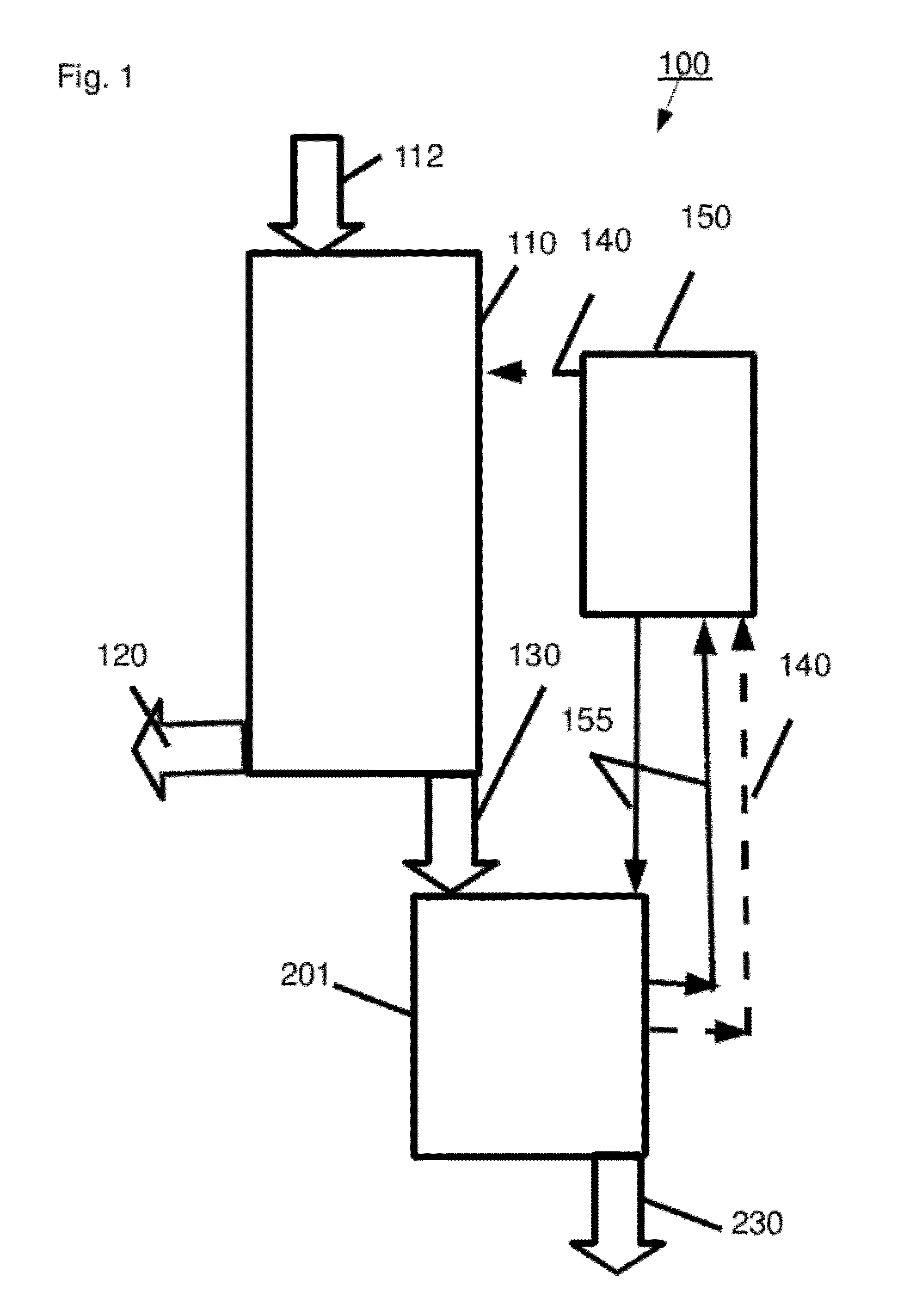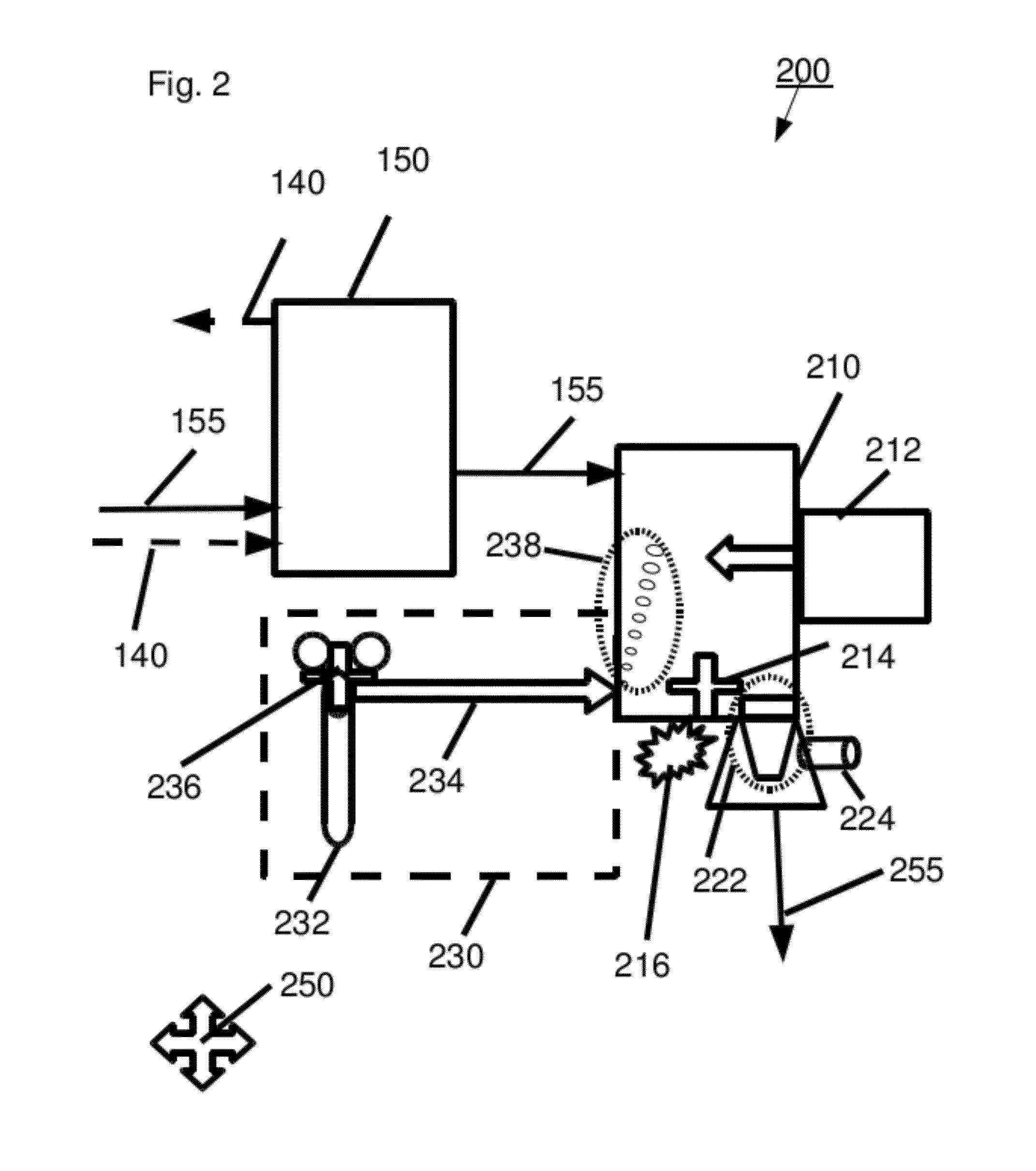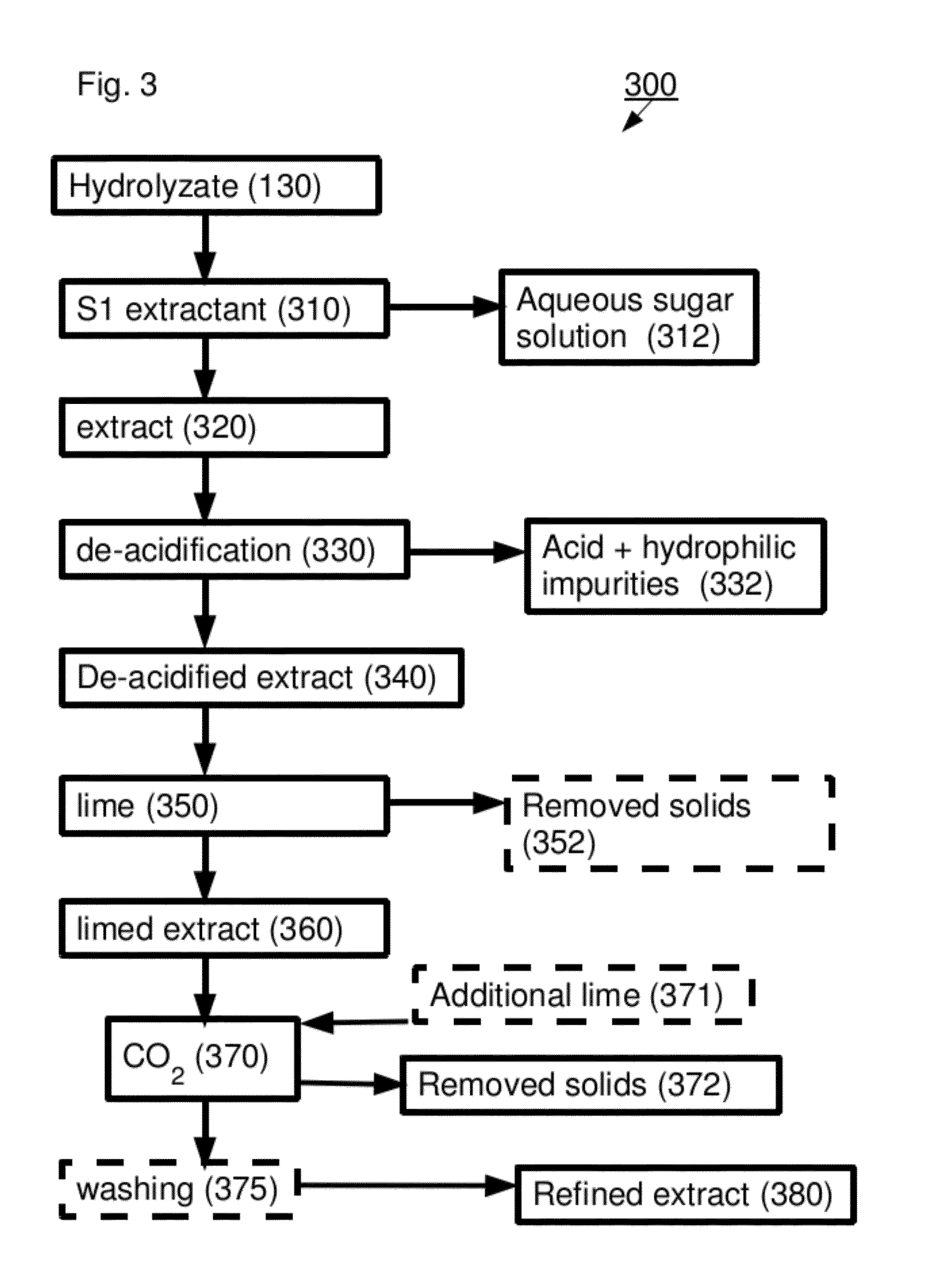Methods and Systems for Solvent Purification
a technology of solvent purification and purification method, applied in the direction of gas-gas reaction process, other chemical processes, separation process, etc., can solve the problems of environmental hazards and high cost of solvents
- Summary
- Abstract
- Description
- Claims
- Application Information
AI Technical Summary
Benefits of technology
Problems solved by technology
Method used
Image
Examples
example 1
Relative Contaminant Loads of De-Acidified Extract, Limed Extract and Refined Extract
[0325]An acid hydrolyzate was prepared by hydrolyzing sugarcane bagasse in a 42% HCl solution. The concentrations of the HCl and of the carbohydrates in the formed hydrolyzate were 31.7% wt and 12.8% wt, respectively. The acid hydrolyzate was equilibrated with hexanol. HCl was selectively extracted to the solvent and an organic extract containing 14.9% wt HCl was formed.
[0326]HCl was distilled out of the extract at a pressure of 50 mm mercury to produce a de-acidified extract. HCl concentration in the de-acidified extract was 0.1% wt. In order to quantify the contaminant load in abstract terms, a sample of the de-acidified extract was taken and checked for absorption at several wavelengths between 310 nm and 600 nm. The results are presented in Table 1 (first line “de-acidified extract”). The high absorption levels at the various wavelengths are indicative of a large contaminant load containing a va...
example 2
Relative Contaminant Loads Limed Extract and Refined Extract Additional Experiment with 3% Ca(OH)2
[0334]In order to assess the impact of the Ca(OH)2 concentration employed in refining, an additional experiment was conducted:
[0335]2.32 gr Ca(OH)2 3% solution was applied to 7.87 gr of de-acidified extract as in example 1 and mixed for 3 hours at 85° C. to produce limed extract. Absorption data as in Example 1 are summarized in Table 2 (first line; limed extract).
[0336]In order to produce refined extract, CO2 was bubbled through the limed extract to reach pH=6.7, followed by addition of 0.43 gr Ca(OH)2 3% solution. The mixture was mixed for another hour at 85° C. and the phases were treated as described above. Results are summarized in Table 2 (second line; refined extract).
TABLE 2Absorption at various wavelengths in the UV-Vis range*,WavelengthA310A350A400A450A500A600Limed extract15.48.02.10.760.310.02Refined extract**16.08.32.20.750.280.01*For absorption measurements, the solutions ...
example 3
Relative Contaminant Loads Limed Extract and Refined Extract Additional Experiment with 10% Ca(OH)2
[0338]In order to assess the impact of the Ca(OH)2 concentration employed in refining further, an additional experiment was conducted:
[0339]5 gr Ca(OH)2 10% solution were applied to 18 gr of de-acidified extract as in example 1 and mixed for 3 hours at 85° C. Absorption data as in Example 1 are summarized in Table 3 (line 1; limed extract).
[0340]In order to produce refined extract, CO2 was bubbled through the limed extract to reach pH=6.9, followed by addition of 1 gr Ca(OH)2 10% solution and mixing for another hour at 85° C. and the phases were treated as described above. Results are summarized in Table 3 (line 2; refined extract).
TABLE 3Absorption at various wavelengths in the UV-Vis range*,WavelengthA310A350A400A450A500A600Limed extract10.16.52.10.790.350.08Refined extract**10.16.32.00.750.340.11*For absorption measurements, the solutions were diluted. The figures in the table were...
PUM
| Property | Measurement | Unit |
|---|---|---|
| acid hydrolyzate | aaaaa | aaaaa |
| acid | aaaaa | aaaaa |
| polarity | aaaaa | aaaaa |
Abstract
Description
Claims
Application Information
 Login to View More
Login to View More - R&D
- Intellectual Property
- Life Sciences
- Materials
- Tech Scout
- Unparalleled Data Quality
- Higher Quality Content
- 60% Fewer Hallucinations
Browse by: Latest US Patents, China's latest patents, Technical Efficacy Thesaurus, Application Domain, Technology Topic, Popular Technical Reports.
© 2025 PatSnap. All rights reserved.Legal|Privacy policy|Modern Slavery Act Transparency Statement|Sitemap|About US| Contact US: help@patsnap.com



